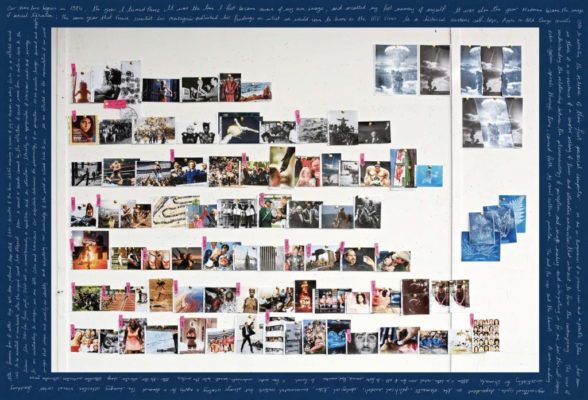Alinka Echeverría
Alinka Echeverría is a Mexican-British artist working in film, moving image, photography and installation. She holds a master’s degree in Social Anthropology and Development from the University of Edinburgh (2004), and a postgraduate degree in Photography from the International Center of Photography in New York (2008).
With this combined training, her work brings a critical approach to questions of visual representation. She was recently selected for Foam Museum’s Talent Award with the research project Nicéphora made during BMW’s Art & Culture Residency at the Nicéphore Niépce Museum in 2015. In 2012 she was voted “International Photographer of the Year” by the Lucie Awards with her work Becoming South Sudan, and in 2011 won the HSBC Prize for Photography with work from Mexico about the relationship between image and belief (The Road to Tepeyac).
Her work has been widely exhibited at international venues including Preus Museum in Norway, Foam Museum in Amsterdam, the Maison Européenne de la Photographie in Paris, the National Portrait Gallery in London, Moscow Photobiennale, as well as solo exhibitions at the Johannesburg Art Gallery, Les Rencontres d’Arles and the California Museum of Photography. Her work is part of several public and institutional collections including the Los Angeles County Museum of Art, the Musée Nicéphore Niépce in France, BMW Art & Culture Collection and the Museum of Fine Arts in Houston. Recent commissions include the Swiss Foundation for Photography and BBC Four, for whom she presented a three part series: The Art That Made Mexico.
Project
Alter Echo
Cyanotype is an old printing process that produces a cyan-blue photographic print, from which the word “blueprint” is derived. This word is also often used in political and economic discourse as well as science and psychology. Alinka Echeverría plans to use this process to create a series of iconic, scientific and personal images, retaining only the outlines or “trace lines”. The project aims to make us reflect on the impact of these pictures that, although not part of our own personal experience, seem to be engraved in the collective consciousness.
“A ‘blueprint’, by definition, is a ‘detailed plan of action, a model or a prototype’. It is a word often used in political and economic discourse as well as science and psychology. My intention is to create an extensive series of analogue cyanotypes or blueprints, depicting lines extracted from images ranging from iconic photographs to scientific imagery. The project reflects on how actions and events that became turning points in our recent history have imprinted themselves through these images into our collective consciousness.
My method would be to distil the lines from the source images in digital postproduction so that like a memory, only the ‘trace lines’ are left. From these, I will produce acetate negatives ready for the cyanotype exposure using the traditional analogue method. If at first not apparent, upon reading my extended captions describing each event depicted, the series will ask the audience to pause and reflect on the impact that such images have had on their own lives. Individual by individual, image by image, we can reflect on the legacy of photography within our collective memory.
Whether it is a traumatic imprint such as the Hiroshima mushroom cloud, or positive counterpoints such as the paradigm-shifting image of the first Hubble Space Telescope to show us a complete galaxy, these images, cumulatively, show us part of our conscious and subconscious societal blueprint.
In addition to these images, I will include ones that are deeply embedded in my personal blueprint such as my brother’s birth and my father’s death. Are my memories of them real, or are they rendered by my mind’s eye from the photographs taken at the event? Subtly referencing the original function of the cyanotype as method of copying and reproduction, I allude to the fact that while most of us have such memories and can relate to these life-changing moments, they are not directly reproducible but in fact individually and uniquely experienced. This adds another layer to the project, one that blurs the line between individual and collective consciousness.
Ultimately, this project interrogates how ways of seeing and remembering leave behind indisputable, yet often forgotten traces in our collective blueprint that highlights photography’s relationship to the phenomenology of perception and history making.”






